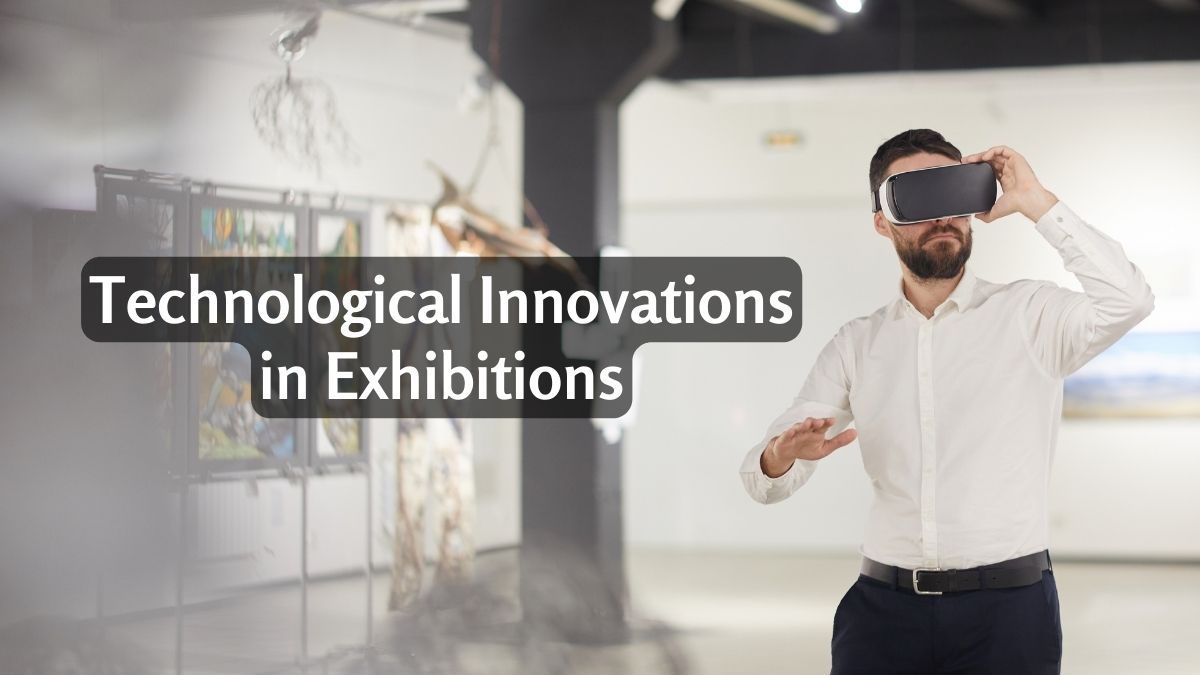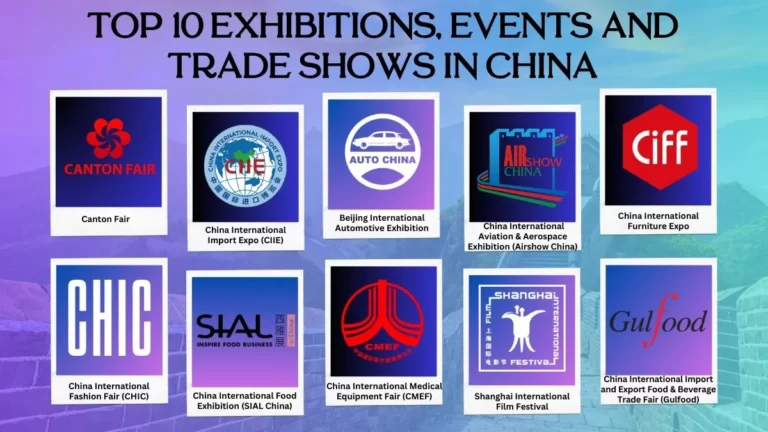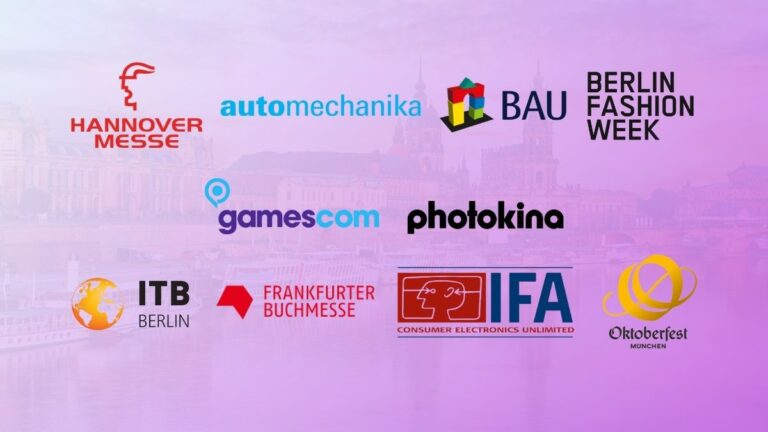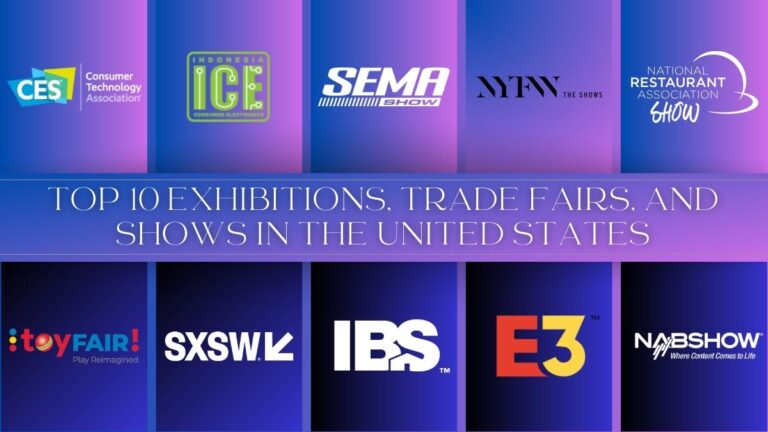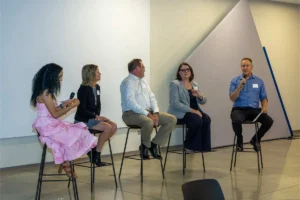Technological innovations in exhibitions, Future of exhibitions, Exhibition industry trends, Cutting-edge technology in exhibitions, Revolutionary exhibition technologies, Transforming exhibitions with tech advancements, Virtual reality in exhibitions, Augmented reality in exhibitions, Internet of Things (IoT) in exhibitions, Artificial intelligence in exhibitions, Robotics in exhibitions, Immersive exhibition experiences, Interactive technologies for exhibitions, Digital signage in exhibitions, Futuristic exhibition displays
Introduction:
Welcome to “Unveiling the Future: Top Technological Innovations in Exhibitions,” where we delve into the exciting realm of cutting-edge technology transforming the exhibition industry. As the world rapidly evolves, so do exhibitions, embracing revolutionary technologies that redefine the way we engage and experience events. From virtual and augmented reality to the Internet of Things (IoT), artificial intelligence, and robotics, exhibitors are leveraging these futuristic tools to create immersive and interactive experiences like never before. Join us on this journey as we explore how technological innovations are reshaping exhibitions, unveiling a world of endless possibilities and captivating displays that push the boundaries of imagination. Discover the trends and advancements that are propelling the future of exhibitions, from digital signage to innovative futuristic displays. Get ready to be inspired by the incredible ways technology is enhancing our exhibition experiences, elevating them to new heights of innovation and engagement. In today’s rapidly evolving world, technological advancements have become the driving force behind innovation in various industries. The exhibition industry is no exception! With breathtaking leaps in technology, exhibitions are undergoing a revolution like never before. In this blog post, we will delve into the top technological innovations shaping the future of exhibitions. From virtual reality and augmented reality to the Internet of Things (IoT) and robotics, cutting-edge technologies are transforming exhibitions, leaving visitors in awe and exhibitors with unparalleled opportunities. Join us as we explore these fascinating advancements and their impact on the exhibition industry.
1. Technological Innovations in Exhibitions:
Technological innovations have become integral to the ever-evolving exhibition industry, revolutionizing the way we design, engage, and experience events. Exhibitors are constantly seeking cutting-edge technologies to transform traditional exhibitions into immersive and interactive experiences that leave a lasting impact on attendees. Virtual reality (VR) and augmented reality (AR) have become increasingly popular, transporting visitors to a world beyond the physical confines of the exhibition. The Internet of Things (IoT) is seamlessly integrating devices and objects, enabling real-time data analysis and personalized experiences. Artificial intelligence (AI) is empowering exhibitors to optimize processes and engage with attendees on a deeper level. Robotics is taking center stage, with automated assistants and humanoid robots captivating audiences. Through these diverse innovations, exhibitions now offer innovative showcases, interactive technologies, and futuristic displays that captivate the imagination and create unforgettable memories. Join us as we unveil the top technological innovations shaping the future of exhibitions, showcasing the endless possibilities and transformative potential these advancements hold.
Virtual Reality (VR) in Exhibitions:
Dive into an immersive world, offering lifelike experiences and engaging storytelling that surpass traditional exhibition setups. VR has the potential to transport visitors to another time or place, allowing them to interact with captivating exhibits. Virtual Reality (VR) has emerged as a groundbreaking trend in the exhibition industry, harnessing cutting-edge technology to transform the way we engage with exhibits. With VR, attendees can be transported to immersive virtual worlds, breaking the boundaries of physical space and time. This revolutionary technology offers an unparalleled level of interactivity, allowing visitors to explore exhibits, historical landmarks, or even fictional realms with astonishing realism. Exhibitors are leveraging VR to showcase their products or services in new and captivating ways. VR enables them to create interactive simulations, interactive training modules, and virtual walkthroughs, providing an unparalleled level of engagement for attendees. From exploring ancient ruins to virtually test-driving a car, VR offers a limitless range of possibilities to enhance and elevate exhibition experiences to unprecedented levels. As VR continues to evolve, it promises to revolutionize the exhibition industry, pushing boundaries and enabling visitors to truly step into a world of awe-inspiring imagination and discovery.
Augmented Reality (AR) in Exhibitions:
Superimposing virtual elements onto the real environment, AR enhances visitor experiences by overlaying information, 3D models, and interactive content. It breathes life into static exhibits, delivering an unparalleled level of engagement. Technological innovations have become the driving force behind the evolution of the exhibition industry, transforming the way we perceive and interact with exhibitions. Cutting-edge technologies are reshaping the landscape of exhibitions, introducing revolutionary advancements that push the boundaries of what is possible. One such groundbreaking innovation is augmented reality (AR), which seamlessly blends the virtual and physical worlds, enhancing exhibition experiences like never before. With AR, attendees can engage with exhibits in ways that were previously unimaginable, by overlaying digital content onto the physical environment. This technology brings exhibits to life, enabling visitors to explore highly interactive and immersive virtual dimensions. From interactive 3D models to real-time information overlays, AR enhances engagement, educates attendees, and creates memorable experiences that leave a lasting impact. As exhibition industry trends continue to embrace cutting-edge technology, the transformative power of augmented reality holds immense potential, revolutionizing the way we perceive and navigate exhibitions, and unlocking new dimensions of creativity and possibility.
Internet of Things (IoT) in Exhibitions:
IoT empowers exhibitors to create smart exhibition spaces with connected devices. Sensors, beacons, and wearable tech provide real-time data, optimizing visitor flow, personalizing experiences, and improving security and logistics. The exhibition industry is continually evolving, driven by the constant quest for cutting-edge technology and innovative solutions. Today, revolutionary technologies are transforming exhibitions into immersive and dynamic experiences, captivating attendees like never before. One key trend that is shaping the industry is the integration of the Internet of Things (IoT) into exhibitions. With IoT, various devices and objects can communicate and connect, allowing the collection and analysis of real-time data. This data-driven approach enables exhibitors to gain valuable insights into attendee behavior, preferences, and engagement levels. By leveraging IoT, exhibitions can offer personalized experiences, interactive displays, and real-time updates, enhancing visitor satisfaction and maximizing exhibitor ROI. From smart wearables that provide interactive information to smart sensors that track crowd flow, IoT is revolutionizing how exhibitions are planned, executed, and experienced. As we delve into the top technological innovations in exhibitions, we explore how IoT is reshaping the landscape, presenting a world of endless possibilities for exhibitors and visitors alike.
Artificial Intelligence (AI) in Exhibitions:
AI-powered chatbots and virtual assistants streamline communication and interaction with visitors. Smart recommendation engines analyze data to understand preferences and deliver personalized content, making exhibits more engaging and tailored. Artificial Intelligence (AI) is revolutionizing the exhibition industry, introducing cutting-edge technology that is transforming the way exhibitions are planned, executed, and experienced. The integration of AI in exhibitions is driving a new era of personalized and interactive experiences for attendees. AI-powered chatbots and virtual assistants have become indispensable tools, offering real-time information and assistance to visitors, ensuring seamless communication and enhancing customer satisfaction. Exhibitors can leverage AI algorithms to analyze vast amounts of data, gaining valuable insights into visitor preferences and behaviors. This data-driven approach enables exhibitors to tailor their offerings, delivering personalized recommendations and targeted marketing strategies. AI-powered interactive exhibits and installations captivate attendees by adapting and responding to their actions in real-time, providing a highly engaging and immersive experience. As AI continues to advance, it holds enormous potential to revolutionize the exhibition industry, making exhibitions more accessible, interactive, and memorable for all participants.
2. Revolutionary Exhibition Technologies:
Revolutionary exhibition technologies are driving the evolution of the exhibition industry, as cutting-edge advancements continue to transform traditional exhibition experiences into futuristic and immersive marvels. One such technology that is reshaping exhibitions is robotics. With the integration of robotics in exhibitions, attendees are greeted by interactive and humanoid robots that guide, entertain, and even provide real-time information. These robots create a unique and engaging experience, leaving visitors captivated and eager to explore more. Additionally, immersive exhibition experiences have emerged as a prominent trend, offering attendees a multisensory journey that transports them into captivating virtual spaces. From virtual reality headsets that enable visitors to explore distant locations to augmented reality interfaces that bring artwork to life, these immersive technologies revolutionize how exhibitions are experienced and remembered. Interactive technologies, such as touchscreens and motion sensors, have also become integral to exhibitions, allowing attendees to actively engage with exhibits, providing a personalized and interactive experience. Furthermore, digital signage plays a crucial role by displaying dynamic content and capturing visitors’ attention with vibrant visuals. These futuristic exhibition displays create a captivating atmosphere, showcasing information in a visually appealing and modern way. As exhibition industry trends continue to embrace cutting-edge technology, the impact of these revolutionary exhibition technologies will continue to shape the future of exhibitions, delivering increasingly immersive, interactive, and memorable experiences for all.
Robotics in Exhibitions:
Robots are becoming increasingly prevalent in exhibitions, offering interactive and captivating experiences. From humanoid robots guiding visitors to intelligent machines performing complex tasks, robotics adds a new dimension to exhibition interactivity. Robotics has emerged as a game-changing technology in the exhibition industry, propelling it into a new era of innovation and engagement. This trend of incorporating robotics in exhibitions is revolutionizing the way attendees interact with displays and the overall exhibition experience. Gone are the days of static exhibits; now, humanoid and interactive robots greet visitors, guide them through the venue, and provide real-time information on showcased products or services. These robots offer a unique and captivating experience, capturing the attention and curiosity of attendees. With their ability to simulate human-like communication, these robots create an immersive and interactive environment, making exhibitions more memorable and enjoyable. Additionally, robots can be programmed to deliver presentations or demonstrations, ensuring consistency and accuracy in messaging. The integration of robotics in exhibitions not only adds a touch of futuristic innovation but also provides invaluable opportunities for exhibitors to stand out and leave a lasting impression on visitors. By transforming exhibitions with this cutting-edge technology, the industry is embracing the future with open arms, blurring the line between fiction and reality.
Immersive Exhibition Experiences:
With the rise of large-scale projection mapping, immersive storytelling has reached new heights. Through vivid visuals, interactive exhibits, and spatial audio, visitors are transported into a world where exhibitions come to life. Immersive exhibition experiences are rapidly becoming a dominant trend in the exhibition industry, marking a significant shift from traditional static displays to dynamic and multisensory engagements. Cutting-edge technology advancements have facilitated this transformation, offering attendees an unparalleled level of immersion that transports them into captivating virtual realms. Virtual reality (VR) headsets have gained popularity as they enable visitors to explore and interact with virtual environments, whether it’s diving into the depths of the ocean or stepping into historical landmarks. Augmented reality (AR) overlays digital elements onto the real world, turning static exhibits into interactive experiences. Attendees can witness ancient artifacts come to life or participate in virtual experiments, fostering a deeper connection and understanding. Alongside VR and AR, projection mapping and holographic displays have emerged as powerful tools to create awe-inspiring visual spectacles. These technologies transform ordinary objects and spaces into vibrant canvases, adding an extra layer of creativity and storytelling. By blending digital and physical elements seamlessly, immersive exhibition experiences are revolutionizing how attendees engage with content, making exhibitions more captivating and memorable than ever before. As technology continues to evolve, the potential for immersive experiences in exhibitions is boundless, promising an exciting and transformative future for the industry.
Interactive Technologies for Exhibitions:
Touchscreens, gesture recognition, and interactive surfaces enable visitors to actively influence their exhibition experiences. These technologies facilitate information discovery, engagement, and collaboration, leaving a lasting impression. Interactive technologies have emerged as a driving force in the exhibition industry, revolutionizing the way attendees engage with and experience exhibits. As one of the prominent trends in the industry, interactive technologies are transforming exhibitions with their ability to create dynamic and personalized interactions between visitors and content. Touchscreens, motion sensors, and gesture recognition systems allow attendees to actively participate and explore exhibits, fostering a deeper level of engagement. These technologies facilitate hands-on learning experiences, enabling visitors to manipulate digital content, interact with simulations, and even customize their journey through the exhibition. Moreover, interactive technologies provide valuable opportunities for exhibitors to gather data and insights about visitor preferences and behavior, helping optimize future exhibitions. By leveraging cutting-edge technology advancements, interactive technologies are pushing the boundaries of traditional exhibitions, creating immersive and memorable experiences that captivate and educate attendees. As the exhibition industry continues to embrace the potential of interactive technologies, we can expect to see even more innovative and transformative applications in the years to come.
Digital Signage in Exhibitions:
Digital displays and video walls grab attention, conveying dynamic information, and enhancing the aesthetic appeal. Real-time updates, interactive content, and personalized messaging enhance communication with visitors. Digital signage has emerged as an integral component in the modern exhibition industry, transforming the way information is communicated and displayed. This trend of incorporating digital signage in exhibitions is reshaping the landscape, enhancing engagement and interactivity. Traditional static signage is being replaced by dynamic and interactive displays, equipped with high-resolution screens that captivate the attention of attendees. These digital signs allow for real-time updates, enabling exhibitors to showcase dynamic content, such as videos, animations, and live feeds. Furthermore, digital signage can be strategically placed throughout the venue, guiding visitors and providing them with relevant information about different exhibits and activities. With the ability to deliver personalized and tailored content, digital signage ensures that attendees receive a customized experience, while also facilitating communication and navigation. As technology continues to advance, digital signage in exhibitions is poised to become even more immersive and interactive, keeping attendees engaged and intrigued. By staying at the forefront of cutting-edge technology advancements, the exhibition industry is leveraging digital signage to create an impactful and transformative experience for all visitors.
3. Future of Exhibitions and Industry Trends:
The future of exhibitions is destined to be a compelling blend of cutting-edge technology and innovative design, as the industry continues to push the boundaries of what is possible. Today, exhibitors are embracing futuristic exhibition displays that captivate audiences and create immersive experiences like never before. From holographic projections that bring characters to life to interactive walls that respond to touch and gestures, technology is transforming exhibitions into a dynamic and personalized journey. Artificial intelligence (AI) and machine learning are also revolutionizing the industry, enabling exhibitors to gather insights on visitor preferences and behavior, while creating tailored content that resonates with attendees. Additionally, the integration of virtual and augmented reality is set to truly revolutionize the exhibition world by providing visitors with stunning visuals and interactive storytelling. As the industry evolves, we can expect to see seamless integration of technology within physical spaces, as well as a greater emphasis on sustainability and eco-friendly practices. The future of exhibitions is an exciting and transformative one, where imagination and technology converge to create unforgettable experiences for visitors worldwide. By staying at the forefront of industry trends and embracing cutting-edge advancements, exhibitors will continue to shape and define the future of the exhibition industry.
Futuristic Exhibition Displays:
Exhibitions are embracing new display technologies, such as OLED screens, transparent displays, and flexible panels. These innovative displays create mesmerizing and futuristic exhibits, captivating audiences like never before. Futuristic exhibition displays are at the forefront of the ever-evolving exhibition industry, captivating audiences with their awe-inspiring technology and visionary design. These cutting-edge displays are pushing the boundaries of what is possible, transforming exhibitions into immersive and otherworldly experiences. From holographic projections that bring virtual characters to life, to transparent LED screens that seamlessly integrate with physical objects, futuristic exhibition displays create a sense of wonder and enchantment. These displays blur the line between the digital and physical worlds, captivating visitors with stunning visuals and interactive storytelling. The incorporation of augmented reality (AR) and virtual reality (VR) takes exhibition displays to new heights, allowing attendees to explore virtual worlds, interact with 3D objects, and even engage in multi-sensory experiences. As technology continues to advance, futuristic exhibition displays will only become more captivating and immersive, offering limitless possibilities for exhibitors to create unforgettable experiences. By embracing these cutting-edge advancements and staying at the forefront of industry trends, exhibitors can truly transform their exhibitions and shape the future of the exhibition industry.
Personalization and Customization:
Personalization and customization have become key trends in the exhibition industry, propelled by cutting-edge technology advancements. Exhibitors are leveraging technology to create tailored experiences that cater to the unique preferences and needs of individual attendees. With the help of data analytics and artificial intelligence, exhibitors can gather valuable insights about their audience, allowing them to curate content and interactions that resonate on a personal level. Interactive displays and touch screens enable visitors to choose their own paths, selecting the information they find most interesting and relevant. Furthermore, augmented reality (AR) and virtual reality (VR) technologies provide immersive and personalized experiences, allowing attendees to explore virtual worlds, interact with virtual objects, and even customize their surroundings. From personalized recommendations and interactive product demonstrations to customized digital signage and guided tours, personalization and customization are transforming exhibitions into highly engaging and tailored experiences. By embracing these trends and leveraging cutting-edge technology, exhibitors can foster deeper connections with their audience, leaving a lasting impression and forging meaningful relationships. With advanced analytics and data-driven insights, exhibitions can deliver personalized experiences tailored to individual preferences. From interactive guides to personalized recommendations, customization has become a key trend.
Sustainability and Green Initiatives:
Exhibitions are increasingly adopting sustainable practices, leveraging technologies like energy-efficient lighting, recyclable materials, and smart waste management systems. The industry is committed to reducing carbon footprints and creating eco-friendly exhibitions. Sustainability and green initiatives have emerged as significant trends within the exhibition industry, complementing the advancements in cutting-edge technology that are transforming exhibitions. Exhibitors are increasingly embracing eco-friendly practices and leveraging innovative solutions to minimize their environmental impact. From energy-efficient lighting and sustainable materials for exhibition stands to digital signage and interactive displays that reduce paper waste, exhibitors are finding creative ways to integrate sustainability into their events. Furthermore, advancements in technology are enabling eco-conscious practices such as virtual conferences and online exhibitions, reducing the need for physical travel and resources. The use of renewable energy sources, such as solar panels, is also gaining traction, powering exhibitions with clean and sustainable energy. By adopting sustainability and green initiatives, exhibitors are not only reducing their carbon footprint but also engaging with environmentally-conscious attendees who appreciate environmentally responsible practices. As the exhibition industry continues to evolve, the seamless integration of technology and sustainable practices will play a vital role in creating engaging and eco-friendly experiences for visitors worldwide.
Conclusion:
In conclusion, the exhibition industry is experiencing a remarkable transformation fueled by cutting-edge technology and innovative advancements. Exhibitors are embracing industry trends and leveraging technology to create experiences that are sustainable, personalized, and futuristic. The integration of sustainability and green initiatives has become a significant focus, with exhibitors utilizing eco-friendly practices to minimize their environmental impact. Moreover, the rise of personalization and customization allows exhibitors to curate tailored experiences that resonate with individual attendees, enhancing engagement and leaving a lasting impression. Additionally, futuristic exhibition displays are captivating audiences with their visionary design and immersive technology, blurring the boundaries between the digital and physical worlds. As these technological innovations continue to evolve, the future of the exhibition industry holds limitless possibilities for creating extraordinary and transformative experiences. By staying abreast of industry trends and embracing cutting-edge technology, exhibitors can tap into the immense potential these advancements offer, shaping the future of exhibitions and captivating audiences in ways never thought possible before. As technological innovations continue to reshape the exhibition landscape, the future holds immense potential for breathtaking exhibits and immersive experiences. From the realm of virtual and augmented reality to the transformative power of IoT and robotics, exhibitions are embracing cutting-edge technologies. Exhibitors and visitors alike are embarking on a journey where exhibitions are no longer passive displays but interactive, personalized, and awe-inspiring encounters. Brace yourself for the future of exhibitions, where the boundaries of creativity and technology are constantly being pushed to new horizons.


